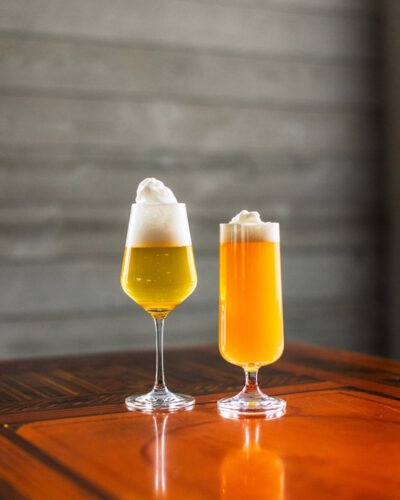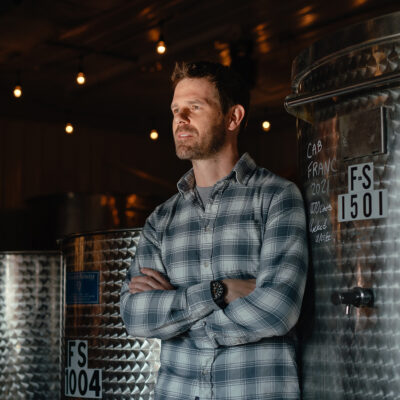COMING OF AGE WITH AMERICA'S BEST NEW BREWER
words Joe Lindsay, Ryan Ziarko
images Jaclyn Simpson
Mar 19, 2024
The past few months have been wild for Seedz Brewery founder Ryan Ziarko. Fresh off welcoming his first baby (son Lewis) to the family, USA Today named Seedz Best New Brewery in the United States. An unexpected accolade, given the competition. Unless you’ve been there; then it’s no surprise at all. Between dad duty, coaxing foamy pours in the taproom, and crafting clean, delicate, old-world style beers in the brewhouse, Ryan found time to discuss local agriculture, the beauty of slow-pour, and his hometown go-tos for drinks, food, and fun.
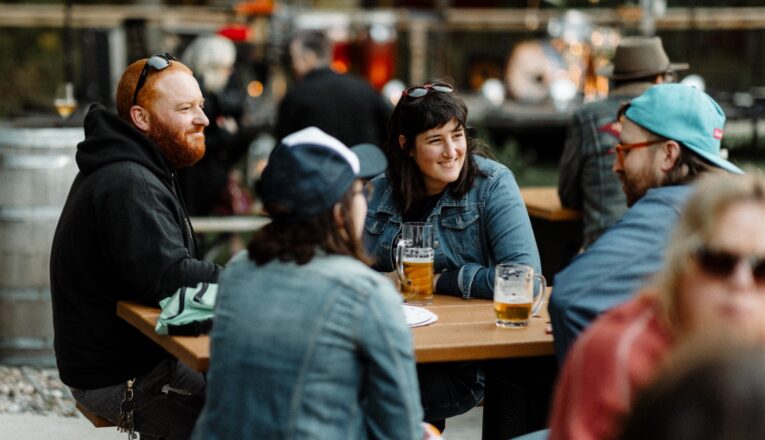
Obviously, ‘local boy makes good’ is the headline, but I’m interested in why you chose to stay and build your business in New Buffalo. Was that always the plan?
Well, it was always gonna be the Midwest because I’m just your classic Midwestern boy.
I think the biggest thing I always wanted was to find a beautiful space where we could use the best local agriculture—the grain, the fruit, the terroir, the land, and everything that surrounds it.
Growing up here, you don’t realize how good you have it until you move away. This is the perfect place to do what we do. We have some of the best produce in the state of Michigan. Sugar Creek Malt Co., our main grain supplier, is not too far from here. And Granor Farm grows a lot of our raw adjuncts. It just makes the beer super special. And the beautiful location helps it all gel together.
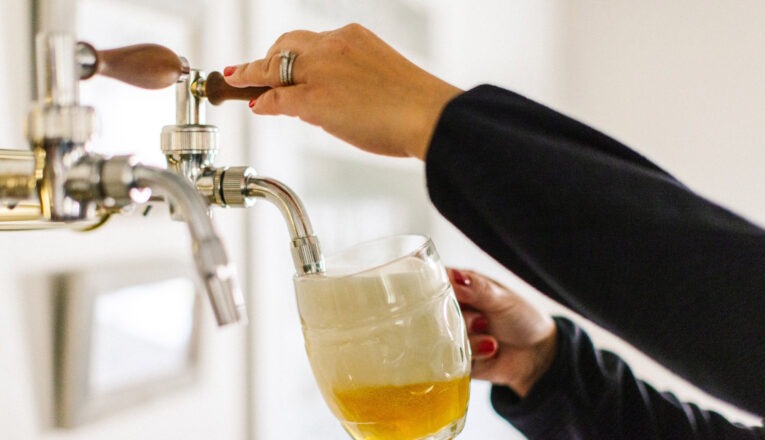
When did beer become the dream? Is it a cheesy Hollywood narrative—‘one sip of Bell’s Two-Hearted Ale and my life fell into focus?’ Or something more gradual? What beers did you first fall in love with, and why?
There were two breweries that really sort of kicked it off. 3 Floyds Zombie Dust (from Muenster, Indiana) was really rare and hard to find. I’d go to the liquor store and instead of a six-pack, they’d be selling a two-pack. The hype got me curious; finally trying it helped me realize what craft beer could be. The other was Pipeworks in Chicago. They really leaned into the culinary aspect of brewing, adding weird or unexpected ingredients to make something almost beyond beer.
I was laughing with a customer the other day because I don’t really drink much IPA or Double IPA anymore. But as a young drinker, you’re after the big, bold flavors. You discover Bell’s and then your classic becomes like, Two-Hearted—gotta have it everywhere. Then Short’s, your Bellaire Brown or Huma-lupa-licious. And my favorite was always Double Crooked Tree, from Dark Horse Brewing in Marshall, Michigan.
Then you get older. You get, not really burned out, but start drinking more imports from Germany and Belgium and it goes full-circle. This is how beer should be. These old-world breweries are not adding a ton of hops, not adding a bunch of other stuff. It’s pretty straightforward. Local terroir, local ingredients, technique, and process make the beer stand out. That’s kind of how we like to go about it.
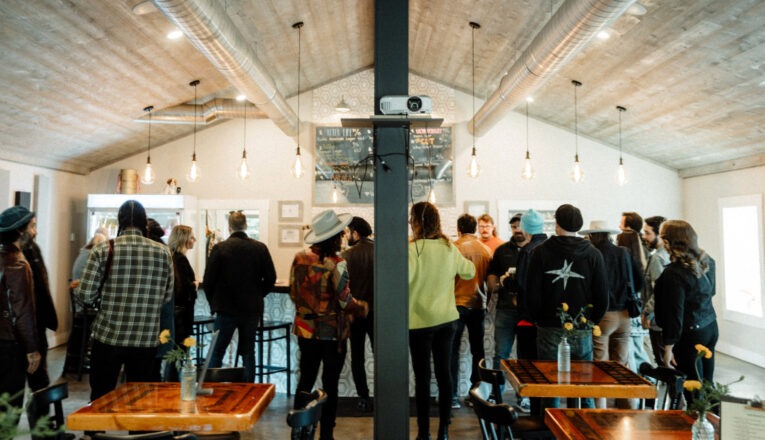
Seedz describes itself as ‘agriculture-driven.’ What does that mean? Why do you think it’s important?
We named the brewery Seedz because that’s where it all starts: grain seed, fruit seed, hops are a rhizome—more a root than a seed—but basically everything we use in our product starts with a seed, right? It’s a long, slow process.
We work with the best growers in our area, ones who have the same passion for their produce as we do for our beer.
Here’s one of my favorite stories. I reached out to Abby from Mick Klug Farm (a fruit-focused operation in St. Joseph, Michigan) for peaches. She says to me, ‘Well, what type of peaches?’ I didn’t know they grow 15-20 varieties! These are second, third, fourth generation farmers who’ve learned everything and know what they’re doing. Those are the people I want to work with.
Like I said, Sugar Creek in Lebanon, Indiana is our base malt supplier. They are so into it about the grain; how it’s roasted, how it’s stored, how it’s processed. Unlike malt I could buy from England or Germany that’s been sitting on the shelf, Sugar Creek malts the grain when we place the order. It’s the freshest of the fresh.
Granor supplies our raw wheat, rye, and corn. It helps give our beer what we call terroir; it’s literally grown in our backyard. Honestly, using local agriculture is part of the brewing tradition. If you go to Belgium, they’re using local Belgian ingredients. You go to Germany, they’re using German stuff. Czech Republic, same thing. They’re using their local suppliers.
I’ve always held the attitude, ‘If they’re doing it, why can’t I?’

Where does slow pour and glassware come in? How do you see that contributing to what you do?
(laughs) It’s just proper!
It all began at Bierstadt, a Lager house in Colorado. I was just a young punk drinking Double IPAs and Imperial Stouts but noticed they had a sign that said ‘$3 Slow Pour Pils.’ So I asked the bartender, ‘Are those really three dollars? Great!’
It took ten minutes to pour this beer. I had no idea what slow pour was, or honestly even what a Pilsner was. I’m like, ‘What the heck? This lady got her beer, this guy got his beer. They ordered way after me. Did you forget about me?’
The bartender says, ‘I know this might be new to you, but it’s called a slow pour. It’s in the title of the beer. It’s a nice, long, slow process that gives the beer a big, frothy, foamy top. We just want to present the beer in the best way possible.’
Then he puts these beers up on the bar, and it’s seriously like the most beautiful thing I’ve seen. The foam looked like meringue peeking up out of the glass. They were in beautiful glassware, with these little like, collars around the stemware to catch the foam that dripped down. It was great.
I didn’t know at the time I was going to open a brewery, but that day has always been in the back of my mind. This is how I want beer to be presented.
It’s like food, right? If it looks good and it feels good, it’s gonna taste good. So when we opened the brewery, it was like, this’ll be the icing on the cake—what tops off all the work we do in the brewhouse. We present our beer like it’s something special because we really think it is.
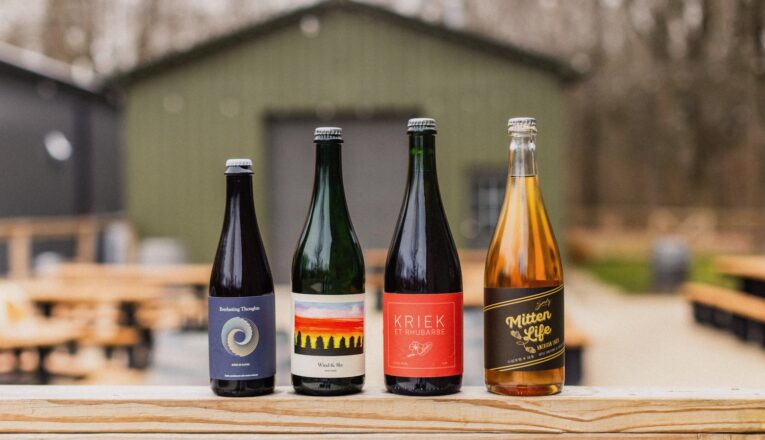
Alright, lightning round. If you’re not brewing beer, what are you doing?
Making bread, or pizza, or tacos. Cooking.
Three favorite athletes?
Wow. JUSTIN FIELDS. No, don’t write that. Michael Jordan, Brian Urlacher, Paul Konerko.
What does an ideal day in New Buffalo look like to you?
Go to David’s, get a coffee and a breakfast reuben on an everything bagel. (The interviewer slips Ryan a $20.) Go to the beach. Get on a boat, go tubing, go fishing. Man, I wish I could go fishing more. I used to love to fish. Hit Rio’s for lunch—steak quesadilla on a flour tortilla. Head to Whittaker Woods to golf. (Bring extra balls because if you don’t hit it straight you’re in trouble.) Just enjoy the weather, enjoy the moment.
I love drinking by a fire. Terrace Room, Villa Nova, River Saint Joe if you don’t mind driving. It’s nice up there.
I just try to remind myself to appreciate how beautiful it is here, and full of hidden gems.
You’re shipwrecked on a desert island. You can only have one beer for the rest of your life, and it can’t be one of yours.
Oh, man. MGD.
Seedz Brewery
16321 Red Arrow Highway
Union Pier, Michigan
Joe Lindsay is the co-owner of David’s Delicatessen and The False Front. He fell in love with craft beer as a college kid drinking west coast IPA drafts and rare imported bottles at the legendary Moan & Dove in Amherst, MA. In addition to crafting creative, locally-inspired sandwiches at the deli, Joe and team curate an ever-changing local tap list and international beer cellar at his (almost) nightly pop-up bar.
updated March 2024
